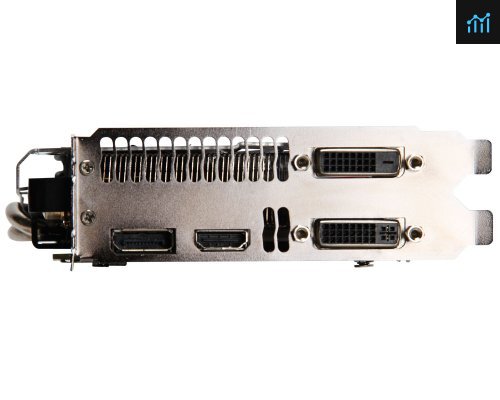

After this one run the temperature was 88°. This was yesterday late evening so i only could test it with a run of 3D Mark 2011.

First i thought the air cooler was not fixed correctly to the card so i removed it, cleaned the GPU from the old thermalpaste and renewed it with a fine film of Arctic cooling MX-4. After realizing this i installed hardware-monitor and gpu-z to check the temperature.īoth programs then showed me that the graphics card performs with 101°! I guess this is much to high isnt it? I know the owner before me used it watercooled and rebuild it to aircooling before he sent it to me. The problem i encountered is that the graphics card started to max-blow the fan of the card (85-100%) every minute i guess. I have installed Battlefiel 4, playing in Full-HD with Ultra Details. In-game benchmark results are recorded as average frames per second, and to provide further analysis, we report the percentage of frames rendered within a specified time, as well as the time taken to render the slowest one per cent of frames during the benchmark run.Im the second owner of the above mentioned graphics card.Īll components are build in a Fractal Design Core 3000 with 1x 140mm and 1x 120mm front fans blowing in the case, the 2x120mm fans from the H80i are blowing out on the rear and a 140mm fan on top of the case blowing out. Where applicable, any vendor-specific enhancements such as PhysX and TressFX are disabled to help even the playing field. The card is clocked at 1.084 GHz, and supports boost technology, that can increase operating frequency up to 1.15 GHz. The GPU is produced on 28 nm manufacturing process, and boasts Kepler architecture. Readers should note that, despite running with lowered settings, games often look considerably better at 4K as a result of the huge increase in on-screen pixels. EVGA GeForce GTX 680 FTW (part number 02G-P4-3686-KR) is one of many EVGA desktop graphics processing units, based on NVIDIA GeForce GTX 680. In order to maintain playable framerates in the latter mode, the level of anti-aliasing may be reduced and any such changes are highlighted using bold in the above table.
NVIDIA GTX 680 FTW PRO
16GB of Corsair Vengeance Pro DDR3 is set to run at 1,866MHz using the built-in XMP profile.įor our ultra-high-end benchmark suite, we have an array of games tested at both full-HD (1,920x1,080) and 4K (3,840x2,160) resolutions. The maximum power consumption of this model is 195 Watt, which is on a par with the reference design. The GPU has PCI Express 3.0 interface, and needs 2 slots on the motherboard. Since the memory runs at 1.552 GHz, and utilizes 256 bit bus, the effective memory bandwidth is 198.66 GB/s. To minimise the impact of any CPU bottlenecks, our test platform is configured with a quad-core Intel Core i7-4770K overclocked at up to 4.4GHz. The GeForce GTX 680 FTW comes with 2 GB of GDDR5 memory. With the heightened frequencies in place, the 3DMark and Total War: Rome II tests are re-run.

Maintaining out-the-box voltage, we increase the card's power target and aim for an optimal balance of core and memory overclock. To emulate real-world usage scenarios, we record GPU core temperature both when idle and while playing Grid Autosport.Ī PCE-318 meter is used to record noise levels when idle and while playing Grid Autosport. To emulate real-world usage scenarios, we record system-wide mains power draw both when idle and while playing Grid Autosport. Depth of FieldĤxMSAA, Very High Textures, Very High System SpecĠxMSAA, Very High Textures, Very High System SpecĨxMSAA, Maximum Quality Settings (Soft Ambient Occlusion On, Advanced Lighting On, Global Illumination On)ĢxMSAA, Maximum Quality Settings (Soft Ambient Occlusion On, Advanced Lighting On, Global Illumination On)įXAA, Ultra Quality Preset, TressFX Disabled Philips Brilliance 4K Ultra HD LED (288P6LJEB/00)Įxtreme Feature Tests - Texture Fill and Colour FillĪA Enabled, Ultra Preset inc. Intel Core i7-4770K (quad-core, overclocked up to 4.40GHz)ġ6GB Corsair Vengeance Pro (2x8GB) DDR3 1,866MHz


 0 kommentar(er)
0 kommentar(er)
